Loudness of Sound - Difference Between Loudness & Pitch
In this article, the loudness of sounds, we discuss terms like pitch meaning, factors on which pitch depends, the loudness of sounds depends on, the pitch of the sound is determined by or loudness of sound is determined by and we also discuss what is rise and fall in pitch, high pitch meaning, the definition of loudness, same pitch, voice pitch, quality of sound depends on, etc.
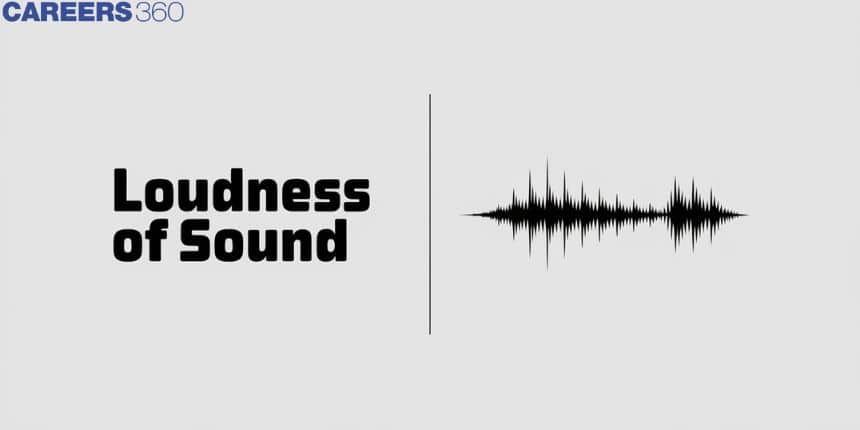
Sounds are a sensation with which every living being is familiar. Sound is commonly produced by vibration like when we touch the string of a guitar string of the guitar vibrates and produces and we hear the pleasant sound of the guitar. Sound is a form of energy and is produced only when some material body is made to vibrate. Human being produces sound by his vocal chord. Put your fingers on your throat, then speak some words. You sense a vibration in your vocal chord, that vibration is the cause for the production of the sound.
It is transmitted through a material medium producing the sensation of hearing in our ears. A medium can be a matter or a substance, sound can propagate in solid and liquid at a greater speed than through the air.
Also read -
- NCERT Solutions for Class 11 Physics
- NCERT Solutions for Class 12 Physics
- NCERT Solutions for All Subjects
The medium required for propagation of sound must have the following properties:
- A medium must be elastic.
- A medium must have inertia.
- The frictional resistance of the medium should be negligible.
It is important to note that sound travels in the form of waves known as sound waves. A sound wave is a longitudinal wave that means that sound travels in back and forth motion in the same direction in which waves travel. Air is compressed and expands due to sound waves.
As the air spreads through the air, the particles end up bunching together in some places and spread out into another. Together with all the bunching and the spreading out cause areas of high pressure and low pressure to move through the air that is why sound waves describe pressure as waves.
It is useful to describe sound waves as pressure waves because we can make devices that can detect the changes in pressure.
That is how some microphones work. They use a diaphragm stretched over a sealed compartment and as sound waves pass by they create areas of the low and high pitch in the compartment. The difference in pressure causes the diaphragm to move back and forth, which electronics then translate into audio data. Your eardrum works in the same way.
Also read :
- NCERT notes Class 11 Physics Chapter 14 Oscillations
- NCERT solutions for Class 11 Physics Chapter 14 Oscillations
- NCERT Exemplar Class 11 Physics Solutions Chapter 14 Oscillations
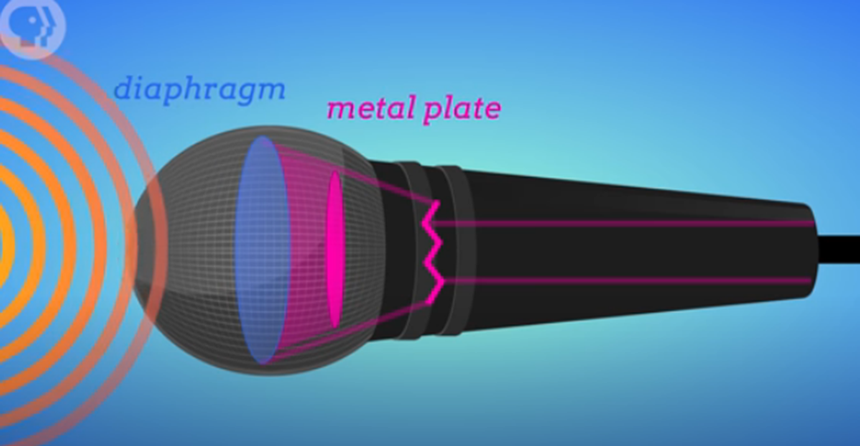
We hear different sounds in our daily life. We like music or the sounds of birds but no one likes the sound of horns of vehicles in traffic. What is the reason all these sounds are very much different from each other? Sound has some characteristics, which make all these sounds different from each other.
- Loudness
- Pitch
- Quality
Let’ discuss these terms
- Loudness: What is the loudness of the sound? Loudness can be defined to differentiate between two different sounds from the same source but on different levels. It means we can easily differentiate which sound is soft and which one is loud. The loudness of the sounds depends upon the following factors and the loudness of the sound is determined by these factors:
- Amplitude
- Distance from the source
- The density of the medium
- The surface area of the vibrating body
- Amplitude: The maximum height above or below the sound waves from their mean position is known as amplitude. In fig, a sound wave shown PA, RB, QC, and SD are maximum displacements from their mean positions P, Q, R, and S respectively, so they represent amplitude.
The loudness of the sound depends upon its amplitude. High amplitude sound waves produce loud sound and low amplitude waves produce soft sound. The loudness of the sound is proportional to the square of the amplitude.
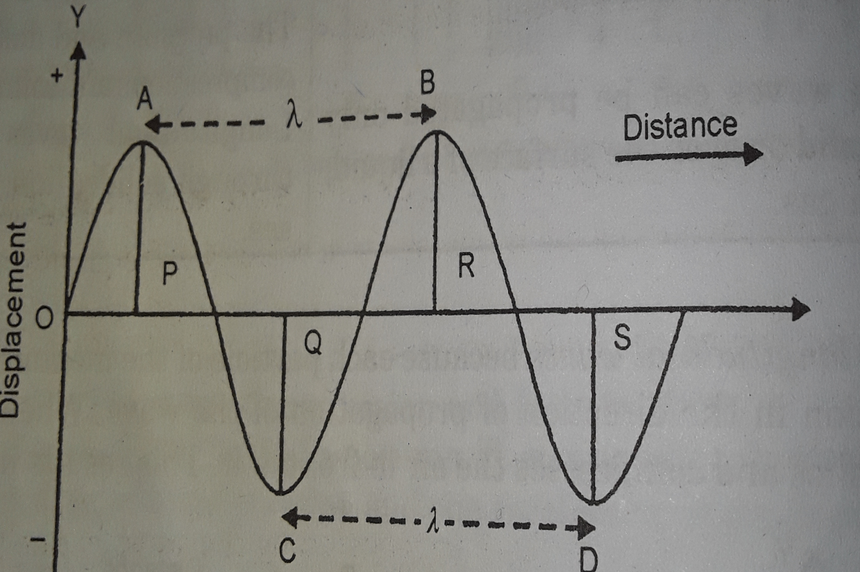
The loudness of sound ∝ (amplitude)^2
This is the relation between amplitude and the loudness of the sound.
Related Topics Link, |
Distance from the source: As we go away from the sound source, the sensation of the sound becomes low and when we near the sound source, the sensation of the sound becomes very high. The loudness of the sound is inversely proportional to the distance from the source.
The density of the medium: The loudness of the sound depends upon the density of the medium. Sound waves travel in the air, which is how we normally experience it. However, it can also travel in liquid or solid matter. Well, it depends on how quickly the pressure wave (sound wave) can move in a given medium. The loudness of the sound is directly proportional to the density of the medium.
The loudness of the sound∝ Density of the medium.
The surface area of the vibrating body: The loudness of the sound depends upon the surface area of the vibrating body. The larger the surface of the vibrating body, the larger the loudness, and with a smaller surface of the vibrating body, the loudness becomes low.

- Pitch: Pitch is an important property of sound. A newborn baby who does not know anything but can sense the sound of a child easily recognizes different voices like bells, birds, his toys, and his mum’s voice or his father’s voice. How can he recognize these voices are different from each other do you imagine? Just because of the pitch, the pitch of the sound tells us how shrill or deep it is.

Commonly girl's voices are shrill and boy's voices are deep.
Shrill voice: Shrill voice has a high pitch because of a greater number of vibrations or greater frequency. It has a sharp voice. e.g., mouse squeak, hyena, and hummingbirds, etc.,
Deep or grave voice: A grave or deep voice has a low pitch because of a lower number of vibrations or a lower frequency. e.g., men’s voices are grave, and voices of lions.F
Therefore, Pitch can be defined as it is the characteristics by which we can distinguish between two sounds or the same but have different frequencies.
There are two types of pitch:
- High Pitch: In physics, high pitch means greater frequency or we can also say that larger the number of vibrations. High pitch voice is known as shrill voice.
- Low Pitch: Low pitch meaning is the lower frequency or smaller the number of vibrations. Low pitch voice is known as grave voice.
- The main difference between high pitch and low pitch is the difference in the number of vibrations.
- Intonation is known as rising and fall in the pitch.
The faster the vibration of the instrument (source), the higher the frequency, and higher is the pitch similarly, the lower the vibration of the source lower the frequency, and lower the pitch.
The pitch of the sound depends upon the vibration of sounds in one second, that is the frequency. We can determine the pitch by frequency.
- Frequency: The frequency can be defined as the number of waves (or vibration of sounds) passing through one particular point in one second. The SI unit of frequency is “hertz”. It is symbolized as “Hz”. The frequency is denoted by (f).
1hz = 1 vibration/1second
There are some bigger units of Hertz to kilohertz (kHz) and megahertz (MHz).
1kHz = 10^3Hz
1MHz = 10^6Hz
- A human being can hear only if the frequency lies between 20 Hz to 20,000 Hz. It is an audible frequency.
- The frequency below the 20Hz is inaudible; this is known as an infrasonic sound and the frequency above the 20,000 Hz is known as ultrasonic sound.
NCERT Physics Notes:

Some of the living beings can hear ultrasonic and infrasonic sounds. Such as whistle, whistle use as an ultrasonic pitch that is too high for us but it is perfectly audible to dogs. On the other hand, elephants use infrasonic sound to communicate with each other across long distances. They can hear these sounds from several kilometers away but we cannot hear them at all.
Difference between loudness and pitch
Loudness | Pitch |
| The loudness of the sound depends on amplitude | the pitch of the sound is depends on the frequency . |
| there are two types of loudness soft sound and loud sound. | Two types of pitch high pitch and low pitch. |
| The loudness of the sound depends on the energy received in per unit time. | while it is independent of the energy. |
Quality: Quality can be defined as distinguishing between two sounds of the same loudness and same pitch but from different instruments.
Let’s take three instruments: tuning fork, violin, and piano. All the three instruments are played with the same loudness and same pitch but the sound of all these three instruments makes a different sound and we can easily recognize the sound of these instruments just because of the quality.
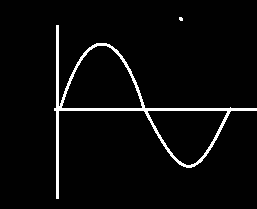
Tuning fork
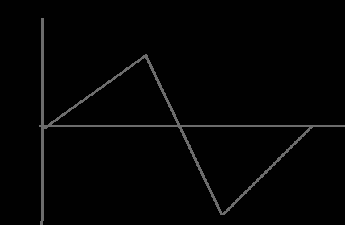
Violin
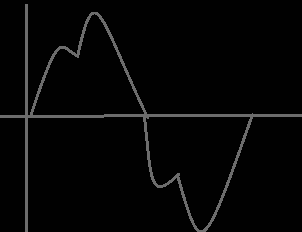
Piano
1Imagine you are in a music concert where a different artist plays different types of instruments, one artist plays guitar, and one plays drums, another one plays piano, and some others sing. All these sounds travel from the same medium i.e., air, but you can easily differentiate between these instruments and the voices of the singers. All the characters of the sounds (pitch, loudness, and quality) help us to differentiate between these sounds.
Also check-
Frequently Asked Questions (FAQs)
The amplitude of the sound waves depends upon the force with which an object is made to vibrate. High amplitude sound waves produce loud sound and low amplitude sound waves produce soft sound.
Pitch is affected by frequency because the pitch is dependent upon it. The lower the frequency pitch is low and higher the frequency pitch is high.
The waveform is the factor on which the quality of the sounds depends.
The sound of the baby is feeble because the sound wave of the baby has low amplitude waves. As we know low amplitudes produce soft sound or we can say that feeble sound.
Lion makes three types of sounds growl, snarl, and roar.